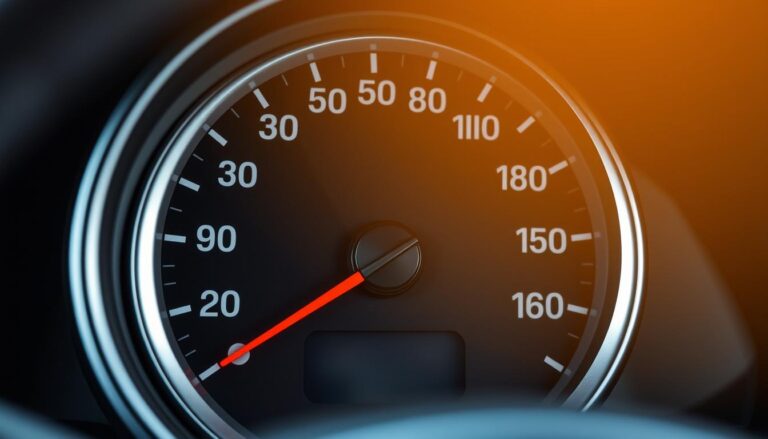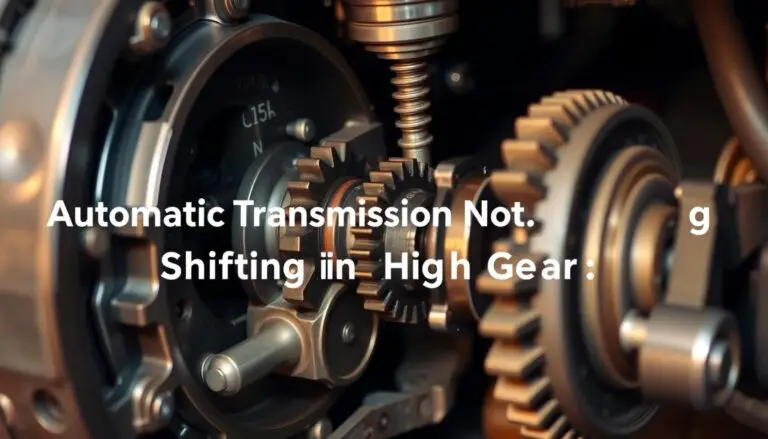When your vehicle’s dashboard lights up with both the traction control light and check engine light on, it can be alarming. However, it’s not always a sign of a catastrophic problem. Understanding these warning systems is crucial for maintaining your vehicle’s health and ensuring safety on the road.
These warning lights indicate potential issues that need attention. The check engine light, in particular, can signal a range of problems, from loose gas caps to more serious engine issues. Meanwhile, the traction control light suggests a problem with the system’s ability to maintain stability.
This comprehensive guide will walk you through what these lights mean, why they might appear together, common causes, and how to diagnose and fix the problems.
Key Takeaways
- Understanding the meaning behind the traction control and check engine lights is crucial for vehicle maintenance.
- These lights can indicate a range of issues, from minor to serious problems.
- Promptly addressing these warning lights can prevent more serious mechanical issues.
- Diagnosing the cause requires a systematic approach to identify the root problem.
- Fixing the issue may involve simple repairs or more complex interventions.
Understanding Traction Control and Check Engine Warning Lights
Modern vehicles rely on a complex system of warning lights to alert drivers to potential issues, with the traction control and check engine lights being two of the most critical. These warning lights are designed to notify drivers of problems that could impact vehicle stability, performance, and safety.
What the Traction Control Light Indicates
The traction control light illuminates when the traction control system (TCS) is active, malfunctioning, or has been manually disabled. The TCS plays a vital role in maintaining vehicle stability by preventing wheel spin, especially on slippery or unstable road surfaces. When the TCS is functioning correctly, it helps to improve traction and reduce the risk of skidding.
What the Check Engine Light Means
The check engine light, also known as the malfunction indicator lamp (MIL), signifies that there’s an issue with the engine or emissions system. It can indicate minor problems, such as a loose gas cap, or more serious issues that require immediate attention. The check engine light is monitored by the vehicle’s onboard diagnostics system, which tracks various engine and emissions-related components to ensure they are functioning within specified parameters.
Why Traction Control Light and Check Engine Light Illuminate Simultaneously
When both the traction control light and check engine light illuminate simultaneously, it indicates a complex issue within the vehicle’s integrated systems. Modern vehicles operate as a network of interconnected systems, where data from various sensors is shared across different components.
The Interconnection Between Vehicle Systems
The engine control module (ECM) and the anti-lock brake system (ABS) module communicate with each other, ensuring that the vehicle operates smoothly. A malfunction in one system can trigger warning lights for multiple systems due to their interconnected nature. For instance, if the ECM detects an issue, it can disrupt the traction control system, causing both lights to turn on.
| System | Function | Impact of Malfunction |
| Engine Control Module (ECM) | Manages engine performance | Affects engine performance and traction control |
| Anti-lock Brake System (ABS) Module | Controls braking and traction | Impacts vehicle stability and safety |
| Traction Control System | Maintains traction on slippery surfaces | Compromises vehicle handling and safety |
Impact on Vehicle Performance and Safety
When both warning lights are illuminated, the vehicle’s performance and safety are negatively impacted. A faulty traction control system may prevent the vehicle from maintaining traction on slippery surfaces, compromising safety.
Key effects include:
- Reduced vehicle handling and stability
- Compromised safety features
- Potential for decreased fuel efficiency
Common Causes for Both Warning Lights
When both the check engine light and traction control light illuminate, it signals a potentially complex issue with your vehicle. This simultaneous warning can be triggered by various factors related to engine performance, traction control, and other interconnected systems.
Engine Misfires and Performance Issues
One major reason for both lights to come on is an engine misfire. Engine misfires occur when the engine fails to ignite correctly, often due to faulty spark plugs, ignition coils, or fuel injectors. This not only affects engine performance but can also cause wheel slippage, triggering both the check engine and traction control lights.
Faulty Wheel Speed Sensors
Faulty wheel speed sensors can send incorrect data to both the engine control module and the traction control system. This incorrect data can lead to the activation of both warning lights, as the vehicle’s systems cannot accurately assess and adjust to the vehicle’s speed and traction conditions.
Tire Pressure Problems
Improper tire pressure can significantly affect traction and trigger both warning systems. Uneven tire pressure leads to uneven wheel speeds and vehicle instability, causing the traction control system to activate, while the check engine light may come on due to the overall impact on engine performance and vehicle stability.
Diagnosing the Root Problem
The simultaneous illumination of the traction control and check engine lights necessitates a thorough diagnosis. To identify the root cause, it’s essential to understand the vehicle’s onboard systems and how they interact.
Using OBD-II Scanner Tools
Using an OBD-II scanner is the first step in diagnosing the issue. This tool connects to the vehicle’s diagnostic port, allowing users to retrieve stored trouble codes from the vehicle’s computer system. Common codes associated with traction control and engine management systems can be identified, helping to pinpoint the malfunctioning components or systems.
- Retrieve stored trouble codes using an OBD-II scanner.
- Identify common codes related to traction control and engine management.
- Interpret codes to determine the specific issue.
Professional Diagnostic Methods
Beyond basic code reading, professional diagnostic methods involve advanced techniques such as live data analysis and component testing. Professional mechanics use specialized equipment to test sensors, actuators, and control modules, ensuring a thorough diagnosis. This comprehensive approach helps identify the primary cause of the warning lights, rather than just clearing the codes.
- Advanced techniques include live data analysis and component testing.
- Specialized equipment is used to test vehicle components.
- A thorough diagnosis ensures the root cause is addressed.
Essential Safety Measures When Warning Lights Appear
When the check engine light and traction control light illuminate simultaneously, it’s crucial to take immediate action to ensure your safety on the road. The functioning of your car’s brakes and stability control system may be compromised, making it essential to prioritize safety for all passengers and prevent further damage.
Immediate Actions to Take
Begin by reducing your speed and maneuvering your vehicle to a secure location. Avoid quick turns and maintain a safe speed to keep your brake system and vehicle stability control effective. Once you’ve pulled over safely, turn off your car engine and refer to the owner’s manual for further instructions.
When to Stop Driving
If you notice unusual noises, vibrations, or handling issues, it’s advisable to stop driving immediately to prevent further damage or safety risks. Documenting when the lights appeared and any accompanying symptoms will help with diagnosis. A table summarizing the actions to take is provided below:
| Symptom | Action |
| Unusual Noises or Vibrations | Stop Driving Immediately |
| No Unusual Symptoms | Drive Carefully to Nearest Service Location |
How to Fix Common Issues
Fixing common problems that trigger both warning lights requires a systematic approach. When the traction control light and check engine light come on, it indicates underlying issues that need to be addressed.
Addressing Sensor Problems
Sensor issues are a common cause for the illumination of both lights. Cleaning or replacing faulty wheel speed sensors and oxygen sensors can resolve the problem. For instance, dirty or corroded wheel speed sensors can provide incorrect speed data to the traction control system, triggering the warning lights.
Resolving Engine Performance Issues
Engine performance problems, such as misfires, can be resolved through spark plug replacement, fuel system cleaning, or ignition coil service. These actions can help restore engine performance and prevent further damage.
Fixing Tire and Traction Control Problems
Checking and correcting tire pressure issues is crucial. Proper inflation techniques and TPMS reset procedures can help resolve the problem. Additionally, maintaining the traction control system through sensor cleaning and module reset procedures can prevent future issues.
| Issue | Possible Fix | Estimated Cost |
| Faulty Wheel Speed Sensor | Cleaning or Replacement | $100-$300 |
| Engine Misfire | Spark Plug Replacement | $200-$500 |
| Tire Pressure Issue | Proper Inflation and TPMS Reset | $0-$100 |
Conclusion
Understanding the reasons behind the simultaneous activation of the check engine light and traction control light is crucial for maintaining your vehicle’s performance and safety. Prompt diagnosis and repair are essential to prevent major issues and costly repairs. Many problems causing both warning lights can be resolved with proper diagnosis and timely repairs. Regular maintenance can prevent many issues that trigger these warning lights, ensuring optimal performance and safe driving.
By addressing the issue properly, you can restore your vehicle to its original condition, maintaining fuel efficiency and overall vehicle stability. It’s essential to consult with professional mechanics for accurate diagnosis when both warning lights appear.


